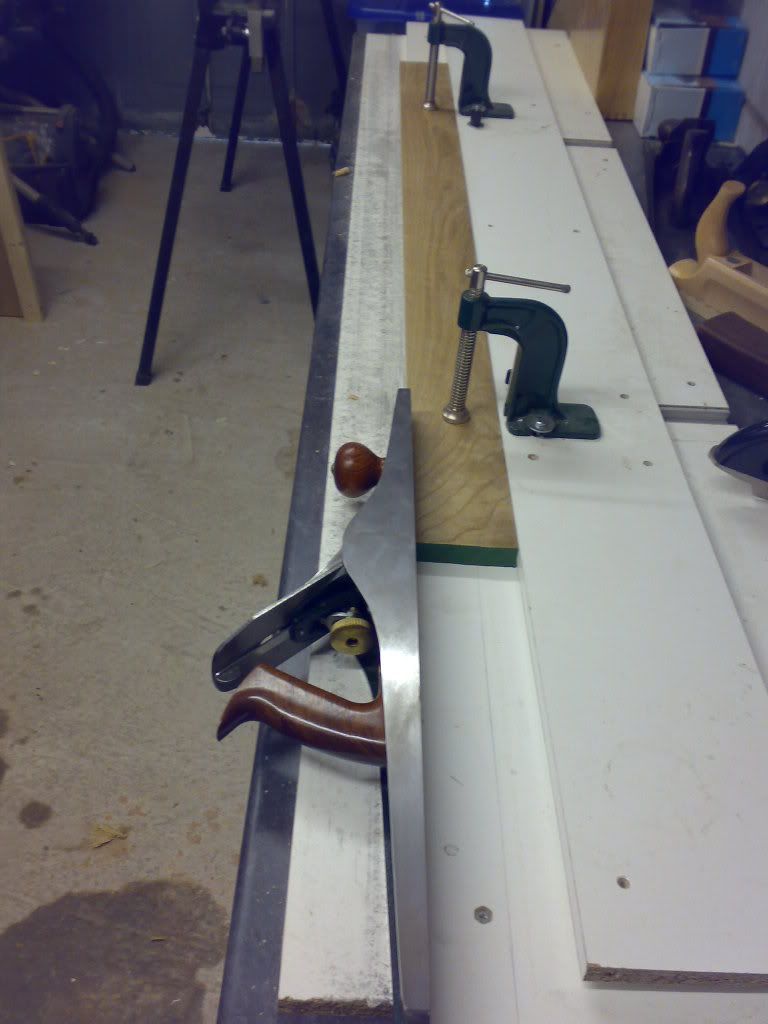David,
in case you're still looking for an experimenter...just got round to it. Put a piece of softwood over the planer, which gives me a hollow of about 3-4 thou over a 3' or so. Sawed off a piece the same length as the No.8 (stuff looked pretty flat under st. edge) and took off 25 good shavings (after the power cutter marks planed off). I wouldn't normally choose a plane this long. It was much easier to start; much less thumb pressure needed on the toe at the start, to hold it steady, despite the longer length sticking out in the fresh air. After 25 shavings the board edge still had a very slight hollow, seen as a sliver of light under the straight edge. How many shavings are you talking about, to produce a noticeably convex surface? Just the ten? Over what length with respect to the plane?
Will repeat, and try something longer later on today, and No.6, (but grandchildren in residence "Do you think you could make me a...")





